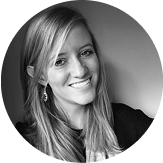Big Agencies vs. Independent Agencies vs. In-House Agencies
The differences between large, small, and in-house agencies come down to ownership, structure, flexibility, resources, budgets, and client relationships.

When most people think about Advertising Agencies, a certain popular show from 2007 about the men on Madison Ave comes to mind. Much has changed within this industry since its golden age in the 60s. While there are still those legacy shops we all know and love, we’ve entered a new era of advertising where legacy shops no longer rule the masses. Independent Agencies and In-House Agencies have entered the chat and are consistently making a name for themselves. Breaking into the advertising world can feel like facing off a three-headed monster, but it doesn’t have to! Let’s go over some key differences, pros, and cons to all the various shops you may just end up working at someday.
The biggest differences between large, small, and in-house agencies come down to ownership, structure, flexibility, resources, budgets, and client relationships. Yeah, that’s a lot of differences. So let’s get granular, shall we?
BIG AGENCIES:
The ‘Big Agencies’ are the places you always hear about. The shops that have been around for ages. They’re almost always part of a global network owned by a holding company like WPP, Omnicom, Publicis, Interpublic Group, and Dentsu. Some examples of the massive, long-standing Advertising Agencies owned by holding companies are Ogilvy (WPP), BBDO (Omnicom), Leo Burnett (Publicis), and FCB (Interpublic Group) to name a few. Ad shops like these are who you normally see winning at award shows like Cannes. Most of them have agencies across the world working on clients large and small, creating work across every type of medium.
Pros of working at a big agency:
- Access to huge budgets
- Let’s be real. Attending award shows, going on productions and getting TV spots produced, even creating full 360 campaigns are all incredibly expensive. Large agencies like those owned by holding companies have access to larger client and agency budgets so you might have more opportunity to attend awards, productions, or even land a paid internship.
- Offers multiple, integrated services.
- Some advertising agencies only offer creative and strategy services, i.e. researching and strategizing a campaign, and then passing it off to the creative team to develop. Bigger agencies are able to offer all that and a bag of chips. From creative, to media, PR, digital, and production, many times clients like having integrated services all in one place.
- Access to larger brands.
- Big brands have big budgets. Think McDonald’s, Coca-Cola, etc. These types of global brands have more money to spend when it comes to advertising. And, with larger brands often comes more work, so having bigger teams can mean cross-platform campaigns can get done quicker and more seamlessly.
- Strong global network and media buying power.
- Bigger agencies have more international reach, meaning they can execute campaigns in multiple markets seamlessly, maintaining brand consistency across regions.
- Having teams in different countries means you have access to local expertise, which is important when it comes to understanding cultural nuances, consumer behavior, and regional regulations.
- When a company has thousands of employees across multiple timezones, it’s easier to quickly adapt campaigns for new markets or global product launches without building new teams from scratch.
- Agencies within the network (e.g., media, PR, digital) often work together on campaigns, making it easier to offer integrated solutions. Plus, cross-collaboration is fun, and you get to learn from various professionals and gain insight on how each department works together to create campaigns.
Cons of working at a big agency:
- Bureaucracy and red tape can slow down projects.
- There are a lot of different minds and opinions at large agencies. Oftentimes, projects can take a while to emerge solely because of the hundred-foot ladder your ideas have to climb to reach the top. This doesn’t just mean reaching the top of the agency, but the top of the client’s marketing department, too.
- Less creative autonomy (business decisions often driven by shareholders).
- Everyone and their Mom thinks they have the chops to be a creative copywriter or art director. When you work at a holding-company-owned agency, you’re not just having to appease your Creative Director, Executive Creative Director, Chief Creative Officer, Global Chief Creative Officer (yes, there are multiple levels of creative directors/officers at large agencies), you’re having to sell your client’s creative to shareholders too. This can cause a lot of back-and-forth when it comes to getting ideas sold in, produced, and aired. It’s common for ideas to go through a meat grinder and come out looking completely different from your original idea. Everyone wants to play with the playdoh.
- Higher costs due to overhead and fees.
- While some large brands have the budgets to pay for bigger agencies, there are still brands that would rather not pay the excessive amount of overhead fees. In pitches, sometimes a client’s decision on which agency to go with comes down to how much money they can save when paying for the work they need.
- Junior teams often handle smaller accounts and deliverables, while senior creatives focus on big-ticket accounts and deliverables.
- If you work at a large agency, you can expect to be climbing the corporate ladder for a while. As a junior at a big agency, you might get stuck with banners and blow-off projects. Sure, you learn a lot from the folks around you, but it might take a lot of time to see promotions, go on productions, and earn your keep. The flip side of this as stated in the pros section is that as a junior, if you have a wonderful Creative Director and senior team, you might get an earlier opportunity to attend a production shoot or sit in on client calls. There is a chance you’ll have to advocate for yourself and the opportunities you desire a bit louder, though.
INDIE SHOPS:
Independent Agencies are, you guessed it, independently owned, meaning they don’t have a holding company over their head. These shops are typically boutique-sized ranging anywhere from 5 to 500 employees and often work with small to mid-sized businesses or select major clients. Examples of independent agencies across America are Joan Creative (NYC), Terry & Sandy (NYC), Mojo Supermarket (Brooklyn, NY), Preacher (Austin, TX), Cutwater (San Francisco), 72andSunny (LA, CA) and Highdive (Chicago, IL). Not always, but sometimes, the “independent agency” will be backed by a holding company, but still consider themselves an indie shop. These agencies know how to have fun with their work, and do it with a lean, mean, and nimble team.
Pros of working at an indie agency:
- More creative freedom and flexibility in how they work.
- At an independent agency, you have slightly more creative autonomy than you would at a larger agency. Less hoops to jump through, fewer opinions, and more opportunity to get your work produced.
- Often specialized in a niche, whether it's digital, branding, or CPG.
- While all of the independent shops listed above create work across all mediums for a variety of brands and services, some independent agencies prefer to focus on a niche. There are solely digital agencies that work primarily on banner, email, and web. There are design shops that only work on branding. There are other places that prefer to only work on CPG (Consumer Packaged Goods) clients. In the age of social media, you can find many indie agencies focused purely on paid and organic social, content creation, influencers, and user generated content. There are also independent agencies that only focus on experiential and activation work. Sometimes clients like to have a range of brains, and will often hire multiple agencies for their different marketing and advertising needs.
- Personal, high-touch client relationships.
- When you work at a smaller advertising agency, you work on smaller teams and you get to know your clients really well. As a junior, you can have the opportunity to get more face time with clients. Rarely but not uncommon, you can even find yourself presenting work in client meetings. This provides great exposure to building client relationships and understanding the workings of a client/agency dynamic, ultimately helping you further your career.
- More learning opportunities.
- Smaller agencies have an ‘all hands on deck’ attitude, especially when working on new business pitches and big campaigns. For junior and mid-level creatives, this gives you more opportunity to work closely with senior creatives and Creative Directors.
Cons of working at an indie agency:
- Smaller budgets and fewer resources.
- This is where your dreams of attending an award show before you turn 40 comes to die. But who knows, maybe there will be an opportunity! Indie shops often work with much smaller client and agency budgets to send employees to events and productions, so unless you’re in a situation where your Creative Director or senior creative can’t attend a shoot, you might have to wait your turn. Even if it was your idea that made it to the top. Bummer, yes, but extra heads cost extra dollars, and for small shops, it’s sometimes tight.
- Harder to scale and keep up with multiple large clients.
- Big clients are quite demanding, and when you have a small team, overwhelm is inevitable. However, if and when you win a big client, the team will do everything in its power to keep it and meet whatever demands with whatever means necessary. So, yes, expect later nights and weekend work. After all, those bigger clients help keep the lights on.
- Fast-paced environment.
- For some this is a con, for others it’s a pro. Working in a fast-paced environment can be exhilarating for a time. It can also be frustrating and stressful. It depends on who you ask. As a creative just starting out, it can be a great way to learn, grow, and challenge yourself. It’s like when your parents put you in swim lessons as a baby and the first thing they do is toss you into the pool and you either sink or swim. If you consider yourself someone who might appreciate more guidance and mentorship, a smaller or independent agency might not be the best place for you to start your career. If you consider yourself a brave little baby who will figure out how to float, this is the pool for you.
IN-HOUSE AGENCIES:
Last but not least, we find ourselves at In-House advertising agencies. Working on only one brand or client is the dream for some folks. There are no holding companies, no external client calls, and no juggling multiple brand voices or design guidelines. Some examples of In-House agencies include The Kitchen, Kraft-Heinz (Chicago, IL), WoW Studios, Whirlpool (Chicago, IL), TBWA Media/Arts Lab, Apple (Cupertino, CA), Meta Creative X, Facebook, Instagram, and WhatsApp (Menlo Park, CA), and Amazon D1, (Seattle, WA). In-House agencies don’t just work on one product all the time. Many of these brands have tons of different products underneath them, so you won’t be stuck creating campaigns for the same product over and over again.
Pros of working at an in-house agency:
- Deep understanding of the brand’s vision and long-term strategy.
- When you work at an In-House agency, you normally will have one client. This means you get to know your client, their products, services, and goals like the back of your hand. In-House creative teams have a deep understanding of what and who the brand is, where the brand is going, and what their long-term strategy is. You don’t have to juggle multiple brand campaign briefs or constantly pitch new business, which can make life a hell of a lot easier.
- More cost-effective over time (no agency fees).
- Bigger brands have started to pivot to In-House advertising because it’s more affordable for them in the long run. Rather than having to outsource an agency and pay overhead fees, they just build their own team who can focus solely on their brand. It’s kind of a win-win.
- Faster approval processes with direct access to key decision-makers.
- It’s a lot easier to set meetings with a brand’s key decision-makers when you all work under the same roof (sometimes). Your campaign ideas, social captions, blogs or emails, etc. don’t have to go through a laundry list of people to get approved.
- Better work/life balance.
- When you remove the madness of multitasking a range of brands (typically in smaller agencies), the constant need for new biz, or having to push back deadlines due to not having enough bandwidth, you find greater work/life balance. Many advertising greats have said f*ck it to agency life, and joined an In-House team for this reason. From the rumors we’ve seen swirling through the interwebs, most days you can clock out at 5pm (WHATTT???!!!).
Cons of working at an in-house agency:
- Can lack external creative perspectives.
- When working on an In-House creative team, you’re constantly immersed in the brand’s world every day, which can make it harder to see new or unexpected creative opportunities. Less exposure to different clients, trends, creative styles, and outside competition can start to feel like an echo chamber. Internal stakeholders could have a knack for reinforcing existing ideas or revamping old campaigns instead of pushing for innovation because they feel it works better.
- Differing views of ‘top-tier talent.’
- Sometimes, people (recruiters, Creative Directors and the like) think that In-House agencies don’t always attract ‘top-tier talent’ because there is a perception in this industry that to be the best creative, you have to work at the ‘best places’ with the ‘best clients’ and blah blah blah. Working at an In-House agency could be wonderful for your career, especially if you’ve already worked at big or small agencies on a diverse range of clients. Our opinion? If you're a talented creative, you can work anywhere and make each place you work at the best place to work. In no way does the place you work dictate your creative talent or abilities.
- Limited exposure to different industries, trends, and competitive insights.
- Many In-House agencies cover various products that fall underneath the larger brand. Like Anhauser-Busch’s In-House creative team, draftLine, you could have the opportunity to work across a range of beer brands (Bud Light, Budweiser, Kona, Stella Artois, etc.) Or at WoW Studios, you could find yourself working on different Whirlpool products (KitchenAid, Maytag, Whirlpool, etc.) Working In-House doesn’t necessarily mean you’ll be working on one product every single day. However, you might feel as though you’re in that echo chamber mentioned above, working on similar products that fall underneath the brand’s umbrella.
So there you have it, friends—all the different parts that go into this three-headed monster. How do you know which one is right for you? Trial and error, honestly. Wherever you end up, keep in mind that the people you work with will always affect your time at any agency. Wherever you choose to work, seek out the good folks while networking, get specific in your interviews, and ask yourself what it is you want in a creative team. What are the characteristics of a Creative Director you would want to work under? What experience do you want to gain from clients, leaders, and senior creatives? A lot of the ‘great’ agencies are great because they hire people who lift up their team, push for great work, care about one another, and make working there fun. Remember, you will always land where you’re meant to. If one place doesn’t work out, know that you were there to learn a valuable lesson that will inevitably guide you to your next destination.
BONUS:
As a student at book180, you will learn from some of the best creatives the Advertising Industry has to offer. Our instructors have years of experience working for renowned Big Agencies, Independent Agencies, and In-House Agencies. Here are some quotes from a few of our wonderful instructors and their take on agencies.
“BBDO Atlanta is a Goldilocks agency (smaller shop in a big network)” - Jon Mueller, VP CD at BBDO Atlanta
The pros of in-house: Deep understanding of the brand, better work-life balance and you get to touch a lot of different channels
The cons: It can become bored after a few years on the same brand, and you often get the below-the-line projects."
-Justin Sanders, Nerdwallet San Francisco
“Any big agency is not one thing - your experience can vary wildly from team to team. The one thing FCB Chicago does incredibly well is putting a focus on DEI that backs up the culture creating a wonderfully diverse team and using that diversity to back up the work. By contrast at smaller agencies I’ve worked at, the culture can be made or broken by one person at the top (for better or for worse” - Matt Portman, FCB Chicago
“Working at a digital-first agency such as Monks is like sailing on a huge ocean, it might not be suitable for all ships, but if you got what it takes, you might find some unexplored islands to conquer.”-Rafael Costa, Media Monks Buenos Aires
___
For more information on our instructors, check out our website at www.book180.com/why180
___
This blog post was written by book180 Instructor Taylor Smith, freelance Senior Copywriter in Austin, TX.







